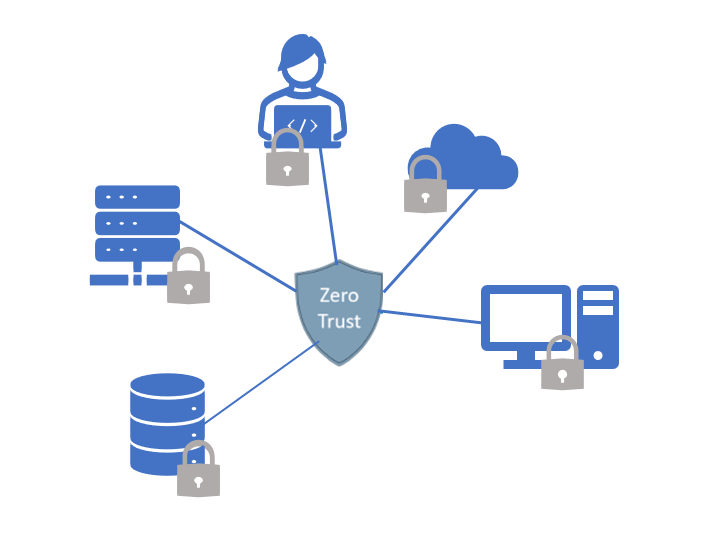Zero Trust as a security strategy
The traditional perimeter-based approach to defense is heavily based on protecting network access. The emphasis is on restricting everything to a "secure" network with on-premises firewalls and Virtual Private Networks (VPNs). These can be defined as:
Firewall: A firewall is a network security device that filters the incoming and outgoing network traffic. In the absence of a firewall, your network accepts all connection requests from everyone. If in place, a firewall prevents unwanted traffic and malicious software from reaching your network.
Virtual Private Network: A Virtual Private Network (VPN) is a secure connection from one network to another. For example, while using a public Wi-Fi network available at a coffee shop or an airport, you sign into a VPN using a password. A VPN connects your device securely to the internet and ensures your:
- Location stays private.
- Data is encrypted.
- Identity is maintained as anonymous.
The traditional approach assumes that everything within the network security perimeter is safe and divides users into two categories: "trusted" and "untrusted". For example, anyone who works on-premises and uses a device owned by the organization, inside the clearly defined network perimeter, is deemed as a "trusted user". They'll have access to data, applications, and information within the organization. This also means that someone who connects their own device (also known as bring your own device or BYOD) to the corporate network is considered an authorized user and has access to the resources.
The perimeter security model puts organizations at risk from the following:
- Malicious internal actors leaking sensitive information.
- A cybercriminal attempting to gain access using compromised credentials.
- Users exploited as vulnerable entry points.
- A virus-infected device that connects to the network.
As people move from on-premises working to a more hybrid model, the ability of a traditional security approach to keep data, assets, and resources safe becomes more difficult.
The Zero Trust approach

The eroding traditional network security approach has driven a need for new approaches to security. Zero Trust is based on verifying users and devices rather than just determining where they're located. The perimeter model can no longer be trusted as it fails to provide quick responsiveness and the protection required for a rapidly evolving digital landscape. For example, in a Zero Trust security model, users aren't only verified at the perimeter but also when they move from one part of the network to another. Implementing Zero Trust alleviates the issue of who's accessing what and improves overall security for an organization. The benefits of adopting a Zero Trust framework include, but aren't limited to:
- Enhanced user experience: Zero Trust enhances user experience by automating protection and security compliance, such as enforcing conditional access based on the principle of least privilege. With users working remotely, bringing their own devices and connecting to resources hosted in multiple environments, a Zero Trust approach empowers them to work and collaborate securely across all data, apps, and infrastructure.
- Protecting IT assets: A Zero Trust approach helps by protecting IT assets, such as devices, data, network, applications, and infrastructure—on-premises, in the cloud, or in a hybrid cloud setting. The end-to-end visibility and control are critical to security within an organization. Effective Zero Trust deployments ensure protection at each layer through continuous verification and addresses the vulnerable entry points that could lead to a breach.
- Monitoring security posture: A Zero Trust strategy enables organizations to enforce strong governance to strengthen their security stance with minimal disruption to the existing network and users. Zero Trust principles augment your existing network and keep users secure by automating routine tasks across all domains and layers of defense, to reduce the chances of human error.
By adopting the recommendations and approaches suggested in the Zero Trust approach, you'll be able to maintain the integrity, authenticity, and confidentiality of your data, assets and resources.